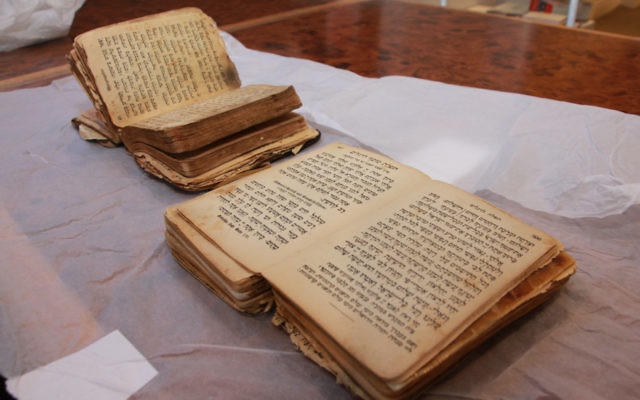Shoah exhibition takes shape
As work continues on the fit-out of the Sydney Jewish Museum’s new permanent exhibition on the Holocaust, The AJN was given an introductory tour by co-curator Shannon Biederman, revealing some treasured items.

AS work continues on the fit-out of the Sydney Jewish Museum’s new permanent exhibition on the Holocaust, The AJN was given an introductory tour by co-curator Shannon Biederman, revealing some treasured items.
Among the more than 100 additional objects that will be displayed are two battered, but still intact, siddurs whose owners shared an incredible story.
Czech Jews, the late Rabbi Benjamin Gottshall and Jana Prager, were strangers when they were deported to Auschwitz in the early 1940s and decided to give up meagre bread rations, despite being malnourished, in exchange for the siddurs.
Rabbi Gottshall and Prager derived great comfort and hope from using the siddurs, demonstrating spiritual resistance, as religious observance in the camps could lead to being punished or killed.
Both survived the war and returned to Czechoslovakia where they met, married in 1946 and migrated to Australia three years later with their siddurs.
Other fascinating items include drawings by Polish Holocaust survivor Paul Perkal of punishment scenes he’d observed in concentration camps, and two blankets issued to concentration camp prisoners. One belonged to Susan Karas who stored it under her bedsheet in a camp in Poland.
“There are sections of stitching missing and if you listen to Susan’s testimony, you will find how she got hold of a sewing needle and used thread from the blanket’s lining to mend clothes,” Biederman said.
The second blanket was donated by survivor Olga Horak, who was given it by a kapo in Bergen-Belsen when she was 18 and weighed just 29kg due to typhus and malnourishment.
Upon liberation, it was all that belonged to Olga before she returned to Czechoslovakia and migrated to Sydney. Tests confirmed it was made mainly of human and animal hair.
The new exhibition will feature three times the amount of images, film footage and audio clips, interactive display features and a specially developed app that visitors can use as a virtual guide and resource.
“We recognised that we needed to preserve the survivors’ voices, as numbers are dwindling with age,” Biederman said.
“So we’ve really tried hard to link and present the connections between the displayed items, the people they belonged to and their testimonies, using technology.”
The exhibition is due to open at the end of November.
Olga Horak will share her story of survival as part of the museum’s Remember Me series at 2pm on Sunday, August 21.
SHANE DESIATNIK

comments